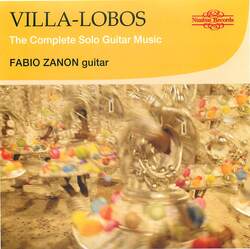
Citation (1)
 Afro-Brazilian music : a bibliographic guide
by
Afro-Brazilian music : a bibliographic guide
by
Provides political and economic information on countries and territories around the world.
Online Access - 4 simultaneous users
An audio and video collection for classical, opera, jazz, world, popular music, and American music. Also includes theatre, dance, and film resources.
An encyclopedia about music all over the world.
A streaming audio database featuring a comprehensive collection of classical music. Search by composer, artist, label, and more. Includes guides on musical eras and other topical resources as well as videos of operas, interviews, masterclasses, lessons, performances, and ballets.

Capital: Brasília
Official Language: Portuguese
Location: The Federative Republic of Brazil is the largest country in Latin America, occupying much of the east of South America. Nearly one-half of the continent is in Brazil.
Area: Brazil covers an area of 8,514,877 sq km (3,287,611 sq miles)
Current Population: Current estimate - 211.6m
Climate: Average monthly temperatures range from 23.9°C (75.0°F) in July to 26.5°C (79.7°F) in October.
Money: Real
Religion: Christianity
Citation (3)
The folk and traditional music of Brazil has been studied from various angles since the beginning of the 20th century; however, although the collecting of substantial folk and popular music repertories has improved during the last four decades of the 20th century, it remains limited. Brazilian folk music reflects its varied cultural origins.
Since the country was colonized by the Portuguese, Luso-Hispanic folk music constitutes the basis of Brazilian folk music. Portuguese material has, in most cases, undergone essential modifications throughout Brazilian history but certain stylistic characteristics, such as Iberian folk polyphony, have been retained. Portuguese melodies, especially in children's songs, can still be found.
Specific scales frequent in Brazilian folk music have been attributed to an African origin: pentatonic scales, major diatonic with a flattened seventh and major hexatonic without the seventh degree. African rhythmic traits, such as the hemiola rhythm, form the basis of many rhythmic intricacies of Brazilian folk music. African rhythmic traits, such as the hemiola rhythm, form the basis of many rhythmic intricacies of Brazilian folk music. While not as sophisticated as its African counterpart, drum music among Afro-Brazilians exhibits similar complexity.
The third major ethnic group that contributed to the early formation of Brazilian folk music is the Amerindian group. Vestiges of this music in the main folk traditions of Brazil can at best be revealed through the retention of certain types of instruments, mainly rattles of the maraca type, certain choreographic genres and performance characteristics.
Biography
Essentially a self-taught composer and an eager and curious listener, Villa-Lobos assimilated spontaneously, if at times reluctantly, a number of important influences, especially at first some of the techniques of Impressionism concerning harmonic practices and orchestration. From the time of his first visit to the USA, Villa-Lobo's career took an upward turn internationally...his music came to be held in very high regard.
Villa-Lobos was unquestionably a strongly nationalist composer, though over six decades of extraordinarily prolific work his nationalism took on many faces. His identification with folk and popular music was of the utmost significance to him, but it would be simplistic to classify his works merely in terms of its presence or absence; or indeed to try to view such references as separate from his numerous and varied experiments in style and language, even within a single work.
He created his own individual symbols of identity and made them acceptable as uniquely national. As widely different in sound structure or style as many of his works may be, his express intent was directed towards the best representation of what he perceived as powerfully suggestive of the wide continuum of the multiple and varied Brazilian cultural traditions.

Listen to the music of Villa-Lobos by clicking the link below.
Heitor Villa-Lobos (1887-1959): The Complete Solo Guitar Music
(1): "Rio from Sugarloaf Mountain" by "Jean-Marc Astesana"
(2): Country Flag (Brazil), in Europa World online. London, Routledge. University of Tennessee, Knoxville. Retrieved 7 June 2022 from http://www.europaworld.com/entry/br.FLAG
(3): Country Map (Brazil), in Europa World online. London, Routledge. University of Tennessee, Knoxville. Retrieved 25 March 2021 from http://www.europaworld.com/entry/br.MAP